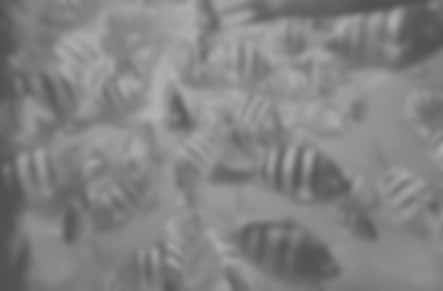Canada geese are the most familiar example of an animal that naturally flocks. Although their flocks can take different shapes (and often do --- columns and clusters are particularly prevalent), Canada geese are commonly thought of as flying in a V-shaped formation. One oft-cited reason for this behavior is that it gives the geese an aerodynamic advantage, since each bird's motion creates an updraft of air, giving the birds behind it a boost. It has even been estimated that this advantage, when spread over a flock of twenty-five geese, could allow the birds to fly seventy percent further than they would be able to individually. However, aerodynamics may not be the reason for the V-shape flock motion. Other scientists studying geese flight behavior have seen that the distance between each member of actual flocks is much greater than would be necessary to take advantage of the updraft that each bird creates.
Other possible motivations include forms of communication and the lessening of the impact of individual errors. It has been suggested that moving in a flock dampens the propagation of error. If a bird begins to move at the wrong speed or in the wrong direction, its error spreads to its flockmates. The other birds, in effect, absorb part of the error, and so the speed and direction of the whole flock are affected very minimally by the error of any particular bird.

Scientists have suggested many different reasons for schooling behavior in fish. One suggestion is that fish school in order to increase the optical confusion that their predators suffer from. Underwater there isn't much light, which decreases color perception and contrast, and there are often large numbers of particles floating around, which further decrease visual acuity. In short, water is typically murky, so a predator faced with a large group of indistinguishable fish will have an extremely difficult time separating out individuals for attack.
For example, the photograph on the right shows a school of Sergeant Majors, taken under clear conditions, but altered to simulate how they would have looked under more typical underwater conditions. If you click on the image, you will see the same fish under clear conditions. Notice in particular that it is impossible to distinguish between the eyes of the fish in the murky picture. (Predator fish often aim for the eyes of their victims, since they are reliable indicators of location and heading.)
Similar to how bird flocking reduces overall error, schooling behavior has been shown to increase the homing accuracy of migrating fish. This is due to two factors: one is that groups of neighboring individuals can quite effectively alter the overall motion of the group in response to their surroundings, allowing the school to maintain a more efficient course; and the other is that schooling fish are able to transmit information about migration routes.
home
boid rules
boid models
applications
bibliography
last updated: May 5, 2000 (chris boone,
sam hillier)